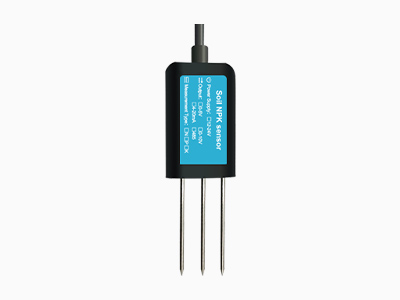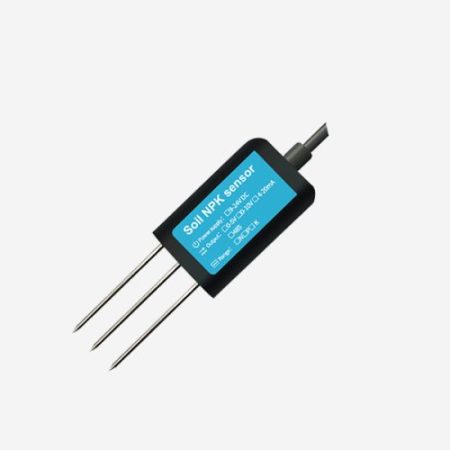In the realm of modern agriculture, the quest for precision and efficiency has led to the development of advanced technologies aimed at optimizing crop production and resource management. One such area of innovation is the use of soil NPK sensors, which play a pivotal role in assessing the nutrient status of agricultural soils. By providing real-time data on the levels of nitrogen (N), phosphorus (P), and potassium (K) in the soil, these sensors enable farmers and agronomists to make informed decisions regarding fertilization, irrigation, and crop health management. In this article, we will delve into the realm of soil NPK sensors, exploring the features, applications, and benefits of the most popular sensors currently available in the market.
Understanding Soil NPK Sensor
Soil NPK sensors are sophisticated devices measure the concentrations of nitrogen, phosphorus, and potassium in the soil. These essential nutrients are critical for the growth and development of plants, and their availability in the soil directly influences crop yield, quality . Traditional methods of soil nutrient assessment, such as laboratory testing and visual inspection, are time-consuming and may not provide real-time insights into the dynamic nature of soil nutrient levels. In contrast, soil NPK sensors utilize cutting-edge technologies, such as spectroscopy, electrochemical analysis, and optical sensors, to deliver rapid and accurate measurements of soil nutrient content directly in the field.
Key Features of Soil NPK Sensors

The most popular soil NPK sensors in the market share several key features that contribute to their effectiveness and reliability in agricultural applications. These features include:
Multi-Nutrient Analysis: Leading soil NPK sensors are capable of simultaneously measuring the concentrations of nitrogen, phosphorus, and potassium in the soil, providing a comprehensive overview of the soil’s nutrient status.
Real-Time Data Collection: Soil NPK sensors offer the advantage of real-time data collection, allowing users to obtain immediate insights into soil nutrient levels without the need for time-consuming laboratory analysis.
Portable and Field-Deployable: Many soil NPK sensors are designed to be portable and field-deployable, enabling farmers and agronomists to conduct on-the-spot soil nutrient assessments across various locations within their fields.
User-Friendly Interface: The interface of soil NPK sensors is typically designed to be user-friendly, with intuitive controls and data visualization features that facilitate easy interpretation of soil nutrient data.
Connectivity and Data Management: Advanced soil NPK sensors may offer connectivity options, such as Bluetooth or Wi-Fi, for seamless data transfer to mobile devices or cloud-based platforms, enhancing data management and analysis capabilities.
Now, let’s explore some of the most popular soil NPK sensors available in the market and their unique features and applications.
Portable digital soil tester
The Portable digital soil tester is a renowned soil NPK sensor that has gained widespread recognition for its advanced technology and precision in assessing the nitrogen status of agricultural soils. The sensor utilizes active crop canopy sensing to measure the nitrogen content in plants, providing valuable insights into the crop’s nitrogen requirements. By analyzing the crop’s reflectance properties, the soil tester enables farmers to optimize nitrogen fertilization strategies, leading to improved crop yields and reduced environmental impact.

Key Features:
- Active Crop Canopy Sensing: The Portable digital soil tester employs active sensing technology to measure the nitrogen status of crops, offering a non-destructive and efficient method for assessing nitrogen requirements.
- Variable Rate Application: Based on the real-time data collected by the sensor, variable rate application of nitrogen fertilizer can be implemented, allowing for precise and targeted fertilization tailored to the specific needs of different areas within the field.
- Integration with Precision Agriculture Systems: The Yara N-Sensor can be seamlessly integrated with precision agriculture systems, enabling farmers to leverage the data for optimizing input management and crop production practices.
Soil NPK sensor
The soil NPK sensor is suitable for detecting the content of nitrogen, phosphorus and potassium in the soil, and judging the fertility of the soil by detecting the content of nitrogen, phosphorus and potassium in the soil, thereby facilitating the customer’s systematic assessment of the soil condition. The sensor is suitable for all kinds of soil, can be buried in the soil for a long time, is resistant to long-term electrolysis, corrosion resistance, vacuum potting, and completely waterproof.

Key Features:
- Multi-Spectral Reflectance Measurement: The Crop Circle utilizes multi-spectral sensors to capture the reflectance properties of the crop canopy, enabling the estimation of soil nutrient levels based on the plant’s response to different wavelengths of light.
- Field-Scout Mobile App Integration: The Crop Circle seamlessly integrates with the Field-Scout Mobile App, allowing users to visualize and analyze soil nutrient data on their mobile devices for on-the-go decision-making.
- Data Logging and GPS Mapping: The sensor is equipped with data logging capabilities and GPS mapping features, enabling users to track soil nutrient measurements and create spatial maps of nutrient variability within the field.
Conclusion
The adoption of soil NPK sensors in modern agriculture represents a significant advancement in precision farming practices, offering farmers and agronomists the tools to optimize nutrient management, enhance crop productivity, and promote sustainable agricultural practices. The most popular soil NPK sensors available in the market, such as the Yara N-Sensor, Holland Scientific Crop Circle, and Veris MSP3, exemplify the cutting-edge technologies and capabilities that are driving the evolution of precision agriculture. With their real-time nutrient analysis, multi-parameter sensing, and integration with precision agriculture systems, these sensors are empowering agricultural stakeholders to make data-driven decisions that contribute to efficient resource utilization, environmental sustainability, and the long-term viability of agricultural production.
